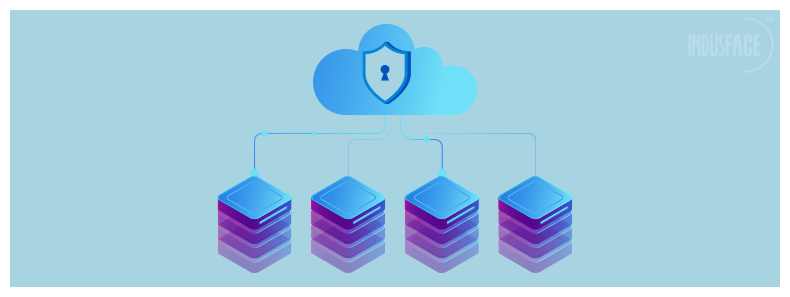Review and Refresh Your Application Security Program
Robust and dynamic application security is non-negotiable for all kinds and sizes of organizations. Failing to protect web applications proactively and effectively increases the risks of financial losses, legal complications, and massive reputational damage. It even raises questions on business continuity. The most important step in strengthening web-based application security is set up and constantly reviewing the robust and dynamic application security management program.
Read on to learn more about setting up such a program, apt for the modern-day security requirements.
What Does Application Security Management Program Entail?
The idea behind an application security management program is to continuously strengthen the security posture of the application, in line with the global compliance standards. It defines security strategies aligned with the organization’s needs and circumstances to proactively identify, analyze, prioritize, mitigate, and manage security risks facing the application.
Application Security Management Programs establishes a roadmap entailing processes, methods, metrics, and best practices needed to achieve the security goals. It lays down the framework to make web-based application security reliable, scalable, and compliant.
Ideally, the program starts in the developmental stages to ensure the application is secure by design. Here, coding practices, web development frameworks, plug-ins, and so on are in line with the secure coding guidelines.
A proper application security management program is comprehensive and includes all devices (including remote ones), systems, networks, applications, third-party and open-source components, custom applications, and so on. The program must necessarily include the identification, analysis, and prioritization of vulnerabilities and misconfigurations, and security weaknesses that exist in the IT infrastructure.
Given the massiveness of the infrastructure, a combination of methods, Static Application Security Testing (SAST), Dynamic Application Security Testing (DAST), and Interactive Application Security Testing (IAST) tools are deployed.
Why Review and Refresh the Application Security Program?

Given the rapid and continuous evolution of the threat landscape, all web applications are in a constant state of threat. Newer and more lethal vulnerabilities are rising, and attackers are discovering more sophisticated and innovative ways to exploit them. We are moving to cloud-based infrastructures, relying more on digital operations, and ushering in more remote work. Entirely, cybersecurity risks are only amplifying.
Given this context, do ‘good enough’ security measures suffice? Can manual-only web application security solutions provide effective security? Will only incidence-response-based strategies suffice?
Definitely not.
We need to move away from the clinical approaches of the past that merely looked at vulnerability scanning results and firewall reviews. Such approaches leave gaping security weaknesses and loopholes, eroding the security posture.
Organizations must rebuild and refresh their web-based application security practices to address the new challenges and relentlessly transforming the security needs of today. They must leverage next-gen approaches, futuristic technology, and the latest best practices to usher efficiency, agility, and reliability in application security.
You may also want to read more application security best practices.
Refreshing the Application Security Management Program: The Best Practices
1. Dynamism in Planning and Strategy is Must
As discussed in the preceding section, the threat landscape is fast evolving, the attack surface is expanding, and the sophistication of attacks is increasing. In such circumstances, dynamism must be built into the application security management program. The strategy and planning must be updated regularly in line with the changing needs and circumstances.
2. Leverage Cloud-based Application Security

Given the need for scalability, efficiency, and reliability in application security management programs, organizations must leverage cloud-based application security. Such solutions are equipped to cover the growing endpoints automatically and grow with your business. It is flexible and easy to deploy even in situations like the current pandemic where remote work on insecure networks and shared devices has become the new normal.
3. Focus on Real-time Visibility
It is impossible to proactively protect the organization’s mission-critical assets and the IT infrastructure without full, real-time visibility into the assets and the network perimeter. Unidentified assets, unknown security gaps, emerging attack surfaces, and so on can become easy entry points for attackers. Leverage tools and solutions that enable you to gain real-time, around-the-clock visibility into your security posture.
4. Incorporate the Latest Techniques
Outdated or ‘just any’ technology, tools, and techniques do not suffice. The application security management program must incorporate tools, techniques, and futuristic technology. They must empower you to stay miles ahead of attackers.
5. Collaborate with Key Stakeholders
Given that applications are in a permanent state of threat, application security needs to be a top management priority and be an IT security team prerogative. The application security management program must ensure that the key stakeholders collaborate. To this end, it must include updated Communication and Training Plans to build awareness among the key stakeholders and ensure buy-in.
The Way Forward
Application security management programs must empower you to stay in full control of your mission-critical assets, information, and IT infrastructure. By choosing a trustworthy third-party service provider, you can effectively do so.
Choose an application security service provider with ample experience and in-depth expertise in technical, technological, and industry-related standards and best practices like AppTrana. AppTrana takes a 360-degree approach to building your security management program. The program is designed with the full picture of your organization and in alignment with global and local compliance frameworks and regulatory standards.

 November 12, 2020
November 12, 2020


